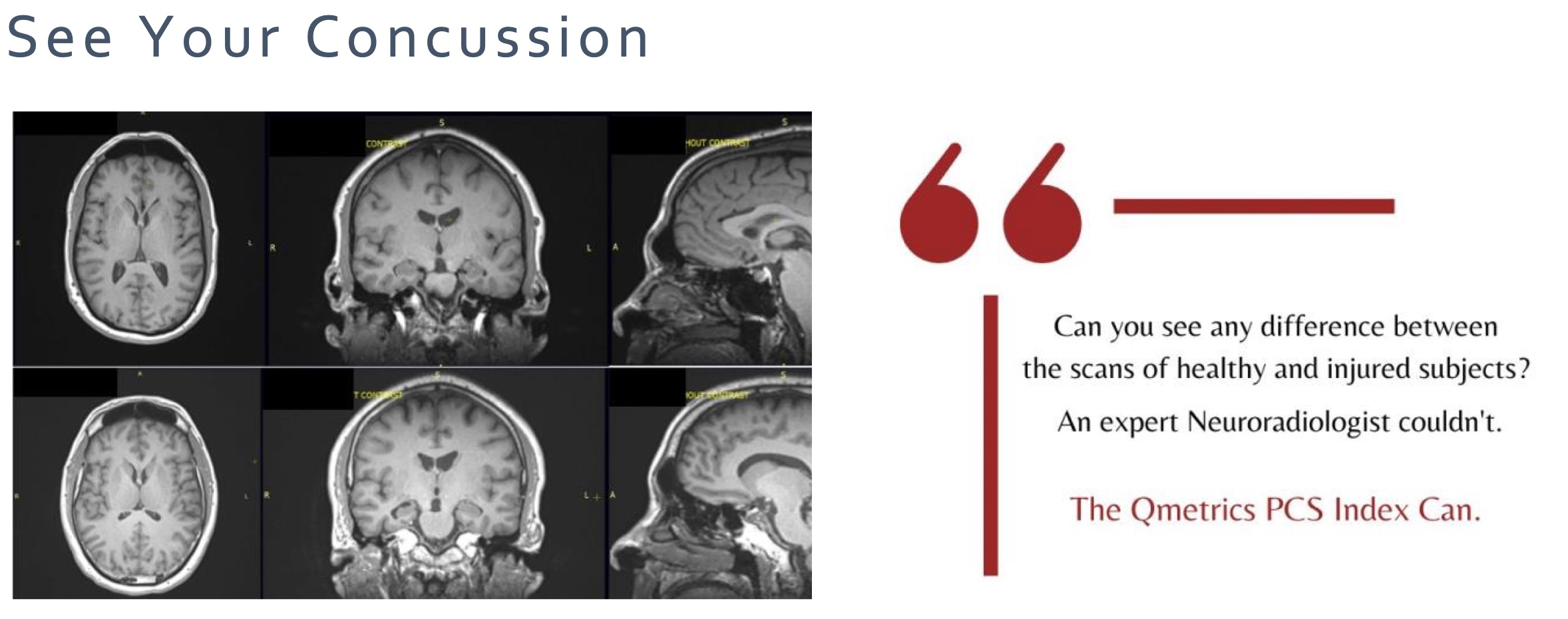QNotes, Vol. 12, Issue 1
Edward Schreyer, CEO, Qmetrics Technologies
With only two teams left in the quest for the title at Superbowl LVII, most NFL players are heading home. Now is the time for relaxation, regeneration, and recovery. In a season plagued by injuries, most notably Damar Hamlin’s cardiac arrest, hundreds of injuries were reported this year and many players will take some time to heal and rehabilitate.

At Qmetrics, we have a special interest in the concussive and subconcussive hits players take. I watched the games during which Tua Tagovailoa suffered his concussions. Each looked horrific. Now that his regular season is over and knowing he is missing the Pro Bowl as he remains in concussion protocol, I wonder how his brain is recovering and wonder if he’d be interested in learning more about his post-concussive symptoms and actually “see” any injury with Qmetrics Post-Concussive Syndrome (PCS) Index.
The PCS Index provides an objective assessment of brain structural abnormalities, or microtrauma in mTBI patients. This effectively enables doctors to “see” the post-concussive injury, in addition to assessing the patient’s symptoms and dysfunction. It was developed after Steven Meyers, MD, a neuroradiologist at the University of Rochester Medical Center, made an inquiry to Qmetrics after being frustrated that he was unable to see anything abnormal in the MRI exams of patients he knew were diagnosed with post-concussive syndrome (PCS). Qmetrics used AI to develop the PCS Index by comparing MRI scans of injured subjects to identical scans of uninjured subjects.
The Qmetrics PCS Index is not a tool for initial diagnosis of a concussion. The Index comes into play for people whose mTBI symptoms linger after the acute phase and develop post-concussive syndrome. The PCS Index has been validated with injured and uninjured patients from ages 18-60 on multiple clinical scanners.
The PCS Index can provide confirmation to patients that their symptoms are real and likely related to brain injury. Understanding the extent of brain microtrauma may support therapeutic decisions or add confidence to recovery milestones.
And as I wondered what Tua would think of the PCS Index, I learned February is International CTE Awareness Month, and I can’t help but think of the many former NFL players who were posthumously diagnosed with CTE. What if we could have “seen” their brain injuries?